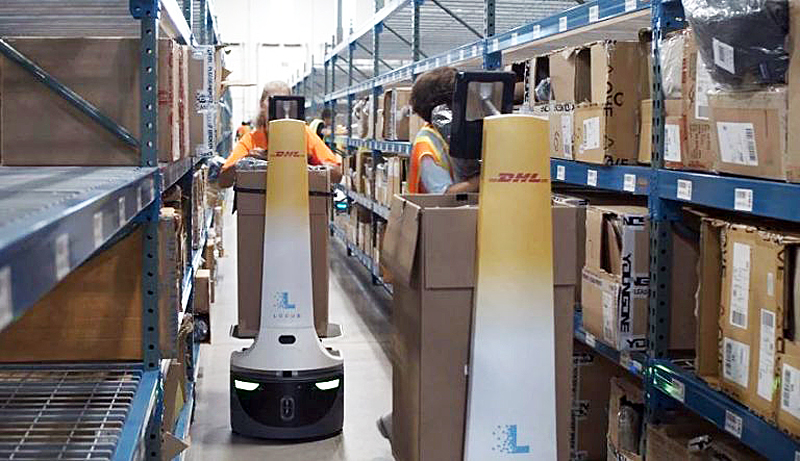DHL expands Locus Robotics collaboration
- June 14, 2021
- Steve Rogerson

DHL is expanding its collaboration with Massachusetts-based Locus Robotics, further digitalising its supply chain processes. By 2022, the logistics specialist plans to implement up to 2000 assisted picking robots globally.
DHL Supply Chain, the contract logistics unit within Deutsche Post DHL Group, has announced a framework agreement expanding its collaboration with Locus Robotics. Initial investments in assisted picking robots have proven effective in commercially scaled operations, and this multi-million-dollar agreement should enhance DHL’s wider accelerated digitalisation strategy.
By 2022, the supply chain specialist plans to take on up to 2000 robots, then becoming by far the largest customer of Locus Robotics worldwide. The assisted picking robots are mostly used in ecommerce or consumer warehouses to help with picking and inventory replenishment, thereby increasing efficiency and accelerating delivery processes.
“It is particularly important for us to be able to consistently optimise our supply chains,” said Markus Voss, CIO and COO for DHL Supply Chain. “Assisted picking robots are very effective in this respect.”
So far, more than 500 assisted picking robots are already in industrial use in DHL’s warehouses in the USA and Europe. By the end of 2021, another 500 robots are to be added in more than 20 locations.
“The collaborative picking technology has clearly proven its effectiveness and reliability in modern warehousing,” said Voss. “More locations have already been identified with concrete implementation roadmaps for the remaining robots, which we will deploy in 2022. However, the overall potential for assisted picking robots in our DHL warehouses is much bigger, so we are confident that we will meet the targets we have set ourselves together with Locus Robotics.”
Assisted picking robots help reduce time spent on manoeuvring pushcarts through warehouses, lower physical strain on employees and increase picking efficiency. They display images of goods to be picked, calculate optimal navigation routes and reduce required training time. Also, they can be swiftly integrated into the warehouse system landscape via DHL’s robotics hub and are well received by staff.
In addition, during peak operational periods, the robots provide an optimal method for capacity expansion as DHL can swiftly bring in more robots with little onboarding effort to the existing fleet.
“Our expanded partnership with DHL reflects the increasing demand for warehouse digitalisation worldwide to meet today’s exploding fulfilment challenges,” said Rick Faulk, CEO of Locus Robotics. “Locus is proud to be a valued technology resource that is helping DHL realise their strategic vision of digital transformation.”
The pandemic has accelerated the booming trend of ecommerce, which makes the labour-intensive picking process in e-fulfilment play an even bigger and more critical role in meeting high end-users’ demands. These trends speeded up the introduction of technologies and automation in various industries, but especially in warehousing. It has also shown what the supply chains of the future may look like and that the world must quickly adapt to new challenges.
DHL is constantly assessing which of the implemented technologies will make their way into the warehouses permanently to optimise processes. In addition to these tangible robots, DHL relies on software and cockpits that can provide real-time information on the status of the global service logistics network of its customers. Accessing the pool of big data and implementing algorithms and artificial intelligence has proven to be a game changer in global supply chain planning and will be rolled out further.




